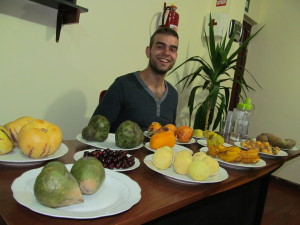FAQ – Information on Peru
Food, money, telephone, internet, shopping and transport
Practical information on staying in Peru
We have divided the information for you into 5 main themes:
Food in Peru
Money in Peru
Internet and telephone in Cusco
Transportation in Cusco
Shopping in Cusco
Food in Peru
Welcome in our culinary paradise!
Potatoes, maize, quinoa and peppers: the most famous ingredients of the Peruvian kitchen have conquered the whole world. But the variation is nowhere as big as in Peru. Try for example causa (a cold pastry of mashed potato, avocado, chicken or tuna), papa rellena (stuffed potato with meat, onions, olives, boiled eggs and – of course – peppers), or papa ocopa (boiled potatoes in a mild-spicy peanut sauce) and you will know that you are in a culinary paradise!
You have to be careful though. Although there are plenty of clean restaurants and the food in hotels and during tours is normally very good, it happens once in a while that tourists fall ill. Mostly they have travelers’ diarrhea, but sometimes a tourist gets parasites or a bacterial infection.
Food recommendations
- Water: you can’t drink water from the tap. It is not necessary either: on every street corner you can buy bottles of mineral water for a few soles. If you boil the water from the tap first, then you can drink it without any problems. And nowadays many accommodations have water purifiers. You can safely drink that water and refill your water bottle there.
- Also be aware of water in other products. Watch out with ice cubes, vegetables and fruits: you never know with what kind of water it has been washed. If you want to eat some fruit, buy something that has a peel.
- In general, most places in the center of Cusco are suited for tourists and serve food and drinks that are safe to take. Generally speaking: touristic restaurants and the better local places are fine. The cheap local places and street food is often not that clean. Be aware of products like ice and mayonnaise. Often it is being conserved for a long time and sometimes it is not cooled very well. Eat those products only in clean restaurants.
- It is impossible to give a complete list of the restaurants you can trust. Your general impression is important: does the restaurant look clean, are the tables clean and what about the waiters? Naturally it is also nice to eat in local restaurants. Try the restaurants that are crowded with local guests: that is mostly a good sign!
- You better not eat street food. You never know how long something is already baking in the sun, and it is often located along busy streets with lots of exhaust fumes raining down on the food. And street sellers don´t have running water, so no place to wash the food and their hands… Do not take the risk if you are only a couple of weeks in South-America! Pay a few Soles more and save yourself a trip to a clinic.
- When you travel to high altitude (like in Cusco), your digestion is working a lot slower. So be moderate with meals that are heavy on the stomach like meat. Best is to eat smaller meals more often, especially if you have problems with the altitude. Drink a lot though, but be moderate with alcohol the first few days.
- When you do get sick: seek medical attention in a private clinic. In general, the clinics are better than the hospitals and in the clinics in Cusco there are staff members that speak some English. Of course, if you get sick and you need medical attention, always let us know so we can help you! We know how important it is to have someone you can trust and help you when you are not feeling well. So don´t hesitate to ask us to help you, we will be very glad to do so!
Money in Peru
In Peru you can pay with 2 currencies: the local currency and the American dollar. In Peru the local currency is the Sol (S/.). You will pay all small purchases with the local currency the Sol. You pay with Soles in restaurants, buses, shops, (super)market etc. However in tourism, for example for tours, flights and hotel rooms, it is normal to pay with American dollars.
Click here for a daily update of the exchange rates.
Tips regarding money matters in Peru
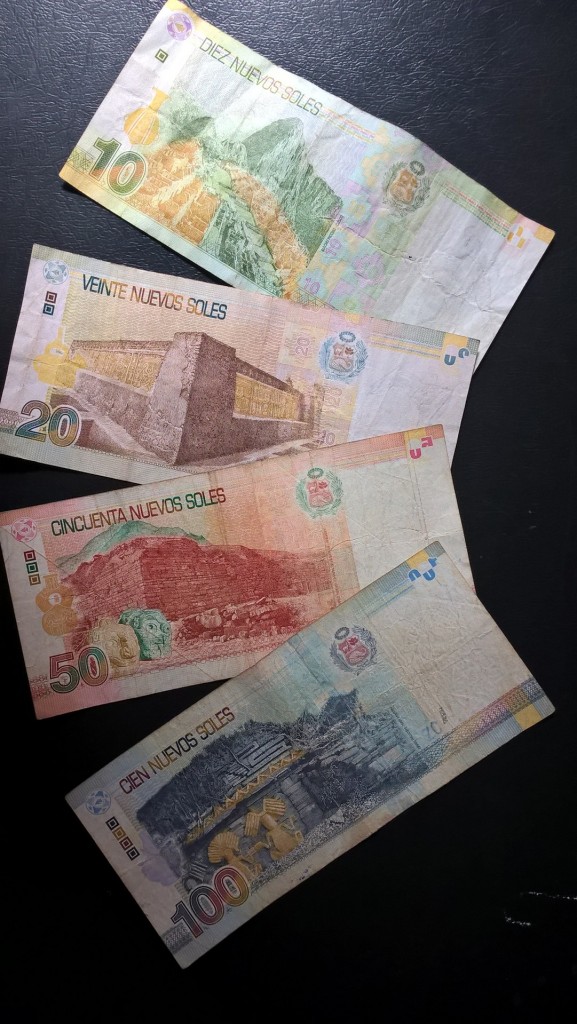
- Currency: you can exchange many currencies in Peru. Best rates you will get for US Dollars, but the Euro-rate is normally good as well. We don’t recommend bringing other currencies with you.
- Dollar bills: keep in mind that people in Peru are very picky with the dollar. No one wants to accept a banknote with even a small tear because then the banks and exchange offices will not accept those dollar bills. So if you bring US Dollars, only bring new bills!
- Cash: cash is frequently used in Peru. Only cash is accepted at smaller shops, bars and restaurants and on the street. It is best to always have some cash on hand.
- Debit cards: before you leave, check with your own bank whether your debit card and bank account are set up to withdraw money from a foreign ATM and for payments abroad. You can often pay with a foreign debit card in larger supermarkets, shops and restaurants.
- ATM/Banks: The best way to deal with the money issue is the ATMs. Please inform with your own bank in your home country, which ATMs you should use. Most banks charge a commission so ask with which bank your bank cooperates. There are many ATMs in the larger cities such as Cusco, but nowadays they are also widely available in many smaller cities. There are often no ATMs in villages. There you often have an agency where you can arrange a number of financial matters and withdraw smaller amounts.
- Credit card: you can pay with your credit card at many larger shops and companies, travel agencies, tourist restaurants and hotels. Visa and MasterCard are the most accepted credit cards. But beware: most companies charge a high commission, even up to 10%. Always ask this first before paying with your credit card.
- Payment apps: there are 2 apps which you can use to pay in Peru: Yape and Plin. Both are only connected to local Peruvian banks so they can only be used by Peruvian bank-account owners.
Internet and telephone in Cusco
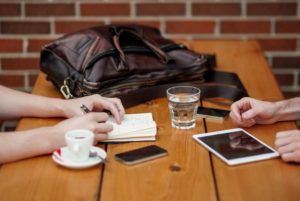
Wi-fi internet is widely available in Peru and especially in Cusco you won´t have any problems connecting. We offer free wi-fi internet in the Spanish school and you will have internet access as well in your accommodation in Cusco. The apartments as well as the guest families have internet access included. Besides that, you will find free wi-fi in all touristic restaurants and bars in the city center of Cusco.
A telephone with a local chip could come in handy when you want to make local calls. You can purchase a chip from a local operator (for example Movistar, Claro or Entel) and put the chip in your telephone. Many times the local operators offer a chip for about 20 soles (5.5 USD) but they give you the 20 soles as telephone credit so it won´t really cost you anything. And if you need to make a local phone call, of course you are free to do so in the Spanish school!
Transportation in Cusco
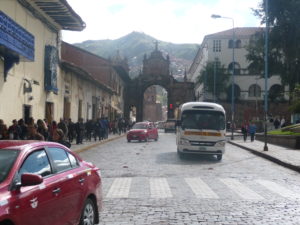
The two main ways of transportation in Cusco are local buses and taxis. A local bus from anywhere to any place within the city of Cusco costs you S/. 1 (about 27 dollar cents) per ride. This is a popular way of transportation and it can get crowded in the bus at rush hour. Of course we can advise you about which bus to take from your accommodation in Cusco to the Spanish school, your volunteer program or any place you would like to go.
The cost of a taxi depends on the ride. A short ride is S/. 4 soles during the day and S/. 5 soles at night. The farther you go, the more it costs. But normally within the city of Cusco, a ride won´t cost you more than $ 2 USD. You can find taxis anywhere at anytime. You rarely have to wait more than a minute to find a taxi.
Shopping in Cusco
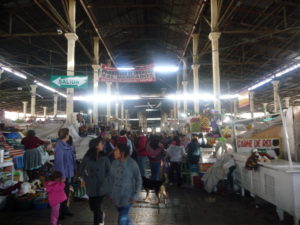
Nowadays you can find most things you need in the shops in Cusco. If you walk into a supermarket, you can find all the basic things, national products and even some imported products like peanut butter, nutella (although it is not cheap) or imported beers. If you are not addicted to a local product from your country, you don´t need to bring anything with you. Outside the main streets, you will find lots of small mini-markets with the most important utilities.
And there is a modern shopping mall in Cusco. In this shopping mall, you will find a cinema, brand stores, supermarket with a lot of imported products, lot of clothing stores and a food corner with local restaurants and international fast-food chains. The mall is called Real Plaza and can be found at about a 10-minute taxi ride from the city center. A taxi from the center of Cusco / the Spanish school to this mall costs you about 5 soles.
In the city center of Cusco you will find lots of restaurants, bars, shops, travel agencies, hotels, money exchanges etc. The shops around the plaza de armas are mainly tourist shops with handicrafts, shops that provide trekking equipment and clothes, drinks and food, post cards etc. And we can certainly recommend you a visit to the local market. You can buy fresh products there or just drink a nice fresh fruit juice!
For most things you buy, you don´t need to negotiate about the price. Prices in shops are fixed prices. But you do need to negotiate about longer taxi rides and souvenirs / handicrafts.
Questions?
If you have any questions about the information on Peru we provided you, or if you have any other questions or doubts, please let us know!

